|
Taiwan's East Rift Valley has some of the most breathtaking scenery in Taiwan. It has towering mountains and vast tracks of flat rice fields. There are also amazing rivers, canyons, and waterfalls to explore. It is also home to Taiwan's International Balloon Festival. There is something for everyone in this area of Taiwan.
When to visit? The East Rift Valley is great year round, but it can get a little hot in the summer, and Typhoon season and heavy rain season last from about May to October. If you are afraid of the heat and rain then you can visit during winter when the temperatures are mild and the climate is usually dryer. Where to stay? Most of the accommodation you will find is near the city centers. If you only want to visit Hualien City or Taitung City, you can consider booking a hotel near downtown, walking or cycling around the city, and taking a bus to sites further away. We have stayed at and recommend Dream Taiwan Homestay (Agoda / Booking.com / Expedia / Hotels.com), a high quality hostel for the money in downtown Hualien, Farglory Hotel (Agoda / Booking.com / Expedia / Hotels.com), right next to Farglory Ocean Park with amazing views of Hualien, and Goldenflower B&B (Agoda / Booking.com) in Yuli right next to Sixty Stone Mountain. In Taitung have stayed at and recommend the Papago International Resort in Chishang, which is a five star hotel with private villas with pools for each room, and Mountain and Ocean B & B in Taimali, which is a quiet and affordable B&B right next to the beach. You can find out where to stay in our Taiwan hotels guide or search for the best hotel deals in Taiwan here. How to get to the East Rift Valley? You can book tickets to travel to the East Rift Valley via inter-city bus on Klook here. Book tickets via the normal train (TRA) on Klook here. Need travel insurance? Compare prices on Insubuy here. How to get around the East Rift Valley: As always, we recommend renting a scooter as the best way to see Taiwan. However, you can also a great deal of Tainan by taking the train, inter-city bus, local bus, biking, or just walking. Getting around in a car is also a convenient option as there is plenty of parking pretty much everywhere in this less crowded county. Scooter Rental: Looking for a scooter rental in Hualien or Taitung? You can search KKday here or Klook here to look for options. You can also check out our scooter rental guide here. Car Rental: If you are looking for car rentals in Hualien or Taitung, you can also search Klook here or KKDay here. You can also check out our car rental guide here. Tours: You can find more tours and activities in Hualien such as Surfing, Paragliding, SUP / Paddle Boarding, Kayaking, Canoeing, River Tracing, River Rafting, Whale Watching, Snorkeling, Diving, ATV / 4-wheeling, Paintballing, Farm Dream Estates Zoo, Water Biking, Oyster Harvesting, Shrimp Harvesting, Indigenous Experience, Glamping, Cycling, Ziplining and much more on Klook here or KKday here. You can also book Wifi and SIM cards for Taiwan on Gigago here. Just to let you know, if you book using the links above, we get some commission at no cost to you, and you can help support our blog. You can click here to receive $5 USD on your first Klook purchase.
0 Comments
Taiwan's East Coast has the most beautiful scenery in Taiwan. From the deepest marble gorge in the world to outer islands, mountains, rivers, and huge sea cliffs, there are unmissable natural wonders for you to explore. In addition, there are endless outdoor activities and water sports that you can take part in here.
When to go: The best time to go they say is around May when it is not too hot and there are no northeasterly winds or typhoons. The typhoon season lasts from around June to October. The busy season is during summer break from June to August, during which time it can be hard to book a hostel or airplane ticket. Winter is the less crowded season, but the water will be colder, there will be constant wind (which could cancel transportation), and it will rain more often. How to get there: By Plane: Traveling to Taitung or Hualien by plane is the fastest way to get there. The trip only takes one hour from Taipei, and there are planes that leave daily through Mandarin Airlines and Uni Air. From Taitung, where you can switch to Saily Air which will take you the rest of the way to Green Island or Orchid Island. A plane ticket to Taitung takes about one hour and costs about 5000 NT per round trip. You can book discount tickets to Taitung on KKday here. By Train: The train ride from Taipei to Taitung takes 3-4 hours and costs about 800 NT one way. Book tickets via the normal train (TRA) on Klook here. By Bus: Busses leave hourly from Taipei to the East Coast. A bus from Taipei to Hualien now only takes about 2.5 hours. You can book tickets to travel to Taiwan's East Coast via inter-city bus on Klook here. By Bicycle: Cycling is the best way to enjoy Taiwan's landscapes if you have the time and energy. Looking for bicycle rentals in Taiwan? You can search on KKday here and search for tours on Klook here. You can also check out our Taiwan cycling guide here. By Car/Scooter: From Taipei, a car ride to Taitung takes about six hours, and a scooter ride takes about eight hours. You can rent a scooter on Klook or KKday. Scooter rental is about 300 NT per day. You can check out our scooter rental guide here. You can also rent a car for about 1500 NT per day. You can rent a car on Qeeq here or Klook here. You can hire a driver or taxi, and you can charter a car here. You can check out our car rental guide here. Tours: There are many tours and activities available on Taiwan's East Coast such as snorkeling, diving, SUPing, Surfing, Speed Boating, Glamping, River tracing, Paragliding, Kayaking, Canoeing, River Tracing, River Rafting, River Tubing, Pack Rafting, Whale Watching, ATV / 4-wheeling, Paintballing, Water Biking, Glamping, Cycling, Ziplining, Horse Riding, and many others, which you canbook through Klook here or KKday here. Accommodation: Looking for a hotel? We recommend booking through Agoda here, which provides the best quality selection of accommodation on the islands. Yilan: We have stayed at and recommend Ying Shih Guest House, a resort in Datong Township near Taipingshan and Fan Fan Hot Spring, and Jiaosi Hotspring Hotel, a hotel with hot springs in each room. We have also stayed at Toucheng Leisure Farm, a recreational farm and experience center in Toucheng (you can book on Agoda here). Hualien: We also have stayed at and recommend Dream Taiwan Homestay (Agoda / Booking.com), a high quality hostel for the money in downtown Hualien, Farglory Hotel (Agoda / Booking.com), right next to Farglory Ocean Park with amazing views of Hualien, and Goldenflower B&B (Agoda / Booking.com) in Yuli right next to Sixty Stone Mountain. You can find out where to stay in our Taiwan hotels guide or search for the best hotel deals in Taiwan here. Taitung: We have stayed at and recommend the Papago International Resort in Chishang, which is a five star hotel with private villas with pools for each room, and Mountain and Ocean B & B in Taimali, which is a quiet and affordable B&B right next to the beach. Looking for scooter rental in Taiwan? Click here or here to search for options. If you are looking for car rentals, you can also search here. You can also book Wifi and SIM cards for Taiwan on Gigago here. Just to let you know, if you book using the links above, we get some commission at no cost to you, and you can help support our blog. You can click here to receive $5 USD on your first Klook purchase.
Green Island is a paradise off the southeastern coast of Taiwan. Once a prison for political enemies of the KMT, it is now a tourist hot spot. It is one of the best places to snorkel and dive in Taiwan, one of only three saltwater hot springs in the world, and it also includes amazing volcanic rock formations and scenery all around the island.
Background: Green Island is the remnant of a volcano that formed millions of years ago and is part of the Luzon Volcanic Arc. Today you can see lots of volcanic rock all along the shoreline. Green Island is the seventh largest Island in Taiwan. Green Island became inhabited hundreds of years ago by the Tao indigenous people (達悟族) (aka Yami people 雅美族, which is a name coined by the Japanese, but the native people prefer Tao), which are thought to have traveled from the Batanes Islands in the Philippines, and then to Orchid Island. It was called Jitanasey by the Tao people. It was also known to be inhabited by the Amis Tribe (阿美族) who reside today in Taitung. It was known by the Amis people as Samasana Island. The Island was first settled by Han Chinese fisherman from Xiaoliuqiu Island in 1813, who called the island Huoshandao (火燒島) or Bonfire Island. More Han settlers from Donggang arrived in 1850. In 1937 the American Steamship SS President Hoover ran ground at Green Island and all aboard were saved. To thank the people of Green Island, the US donated to build the Green Island Lighthouse which was designed by the Japanese and finished in 1938, at 33.3 meters or 109 feet high. Green Island also served as a penal colony for political prisoners' during the martial law era of Taiwan, which lasted from the late 9140s to the late 1980s. Some prisoners went on to help form the Democratic Progressive Party. The prison is now open to the public. Currently, the Island is powered by one diesel generator. It also includes an airport. Currently about 4500 people live on the island, and the main industries are tourism and fishing. Weather and Climate: The island has a tropical rainforest climate, with average high temperatures between 20 and 30 degrees year round. The rainy months are in summer, especially due to Typhoons, but the most sunny days are also in summer (expect a lot of sun), and the most rainy days are in winter. Summer is the tourist season, but spring and fall are also popular times to visit. Winters are said to be dreary, cold, and have constant northeastern winds that can stop airplanes and ferries from departing to the island. When to go: The best time to go they say is around May when it is not too hot and there are no northeasterly winds or typhoons which can cancel your transportation to the island. Typhoon season lasts from around June to October. The busy season is during summer break from June to August, during which time it can be hard to book a hostel or airplane ticket. Winter is the less crowded season, but the water will be colder, there will be constant wind (which could cancel transportation), and it will rain more often. Rules to Consider:
How to get there: By Plane: The only planes to and from Green Island come from Taitung City in Southeastern Taiwan. From Taipei, there are daily flights from Songshan Airport to Taitung, where you can switch to Daily Air which will take you the rest of the way to Green Island. You can book discount tickets from Taipei to Taitung on KKday here. Flight times: As of the time of this blog, there were six flights per day by Daily Air Corporation from about 8 AM to 4 PM (Please note their website is only in Chinese). The flight from Taitung to Green Island takes about 15 minutes. Please note that the aircraft are small and flights can be cancelled due to high winds or unfavorable weather. Costs: NT 1428 to Green Island and NT 1360 from Green Island. By Boat: You can purchase boat ferry tickets through a tour agency such as Klook here or KKday here. There are two places that offer ferry rides to Green Island: Houbihu Harbor (恆春後壁湖漁港) in Pingtung and Fugang Harbor in Taitung (臺東富岡漁港). However, to get there from Houbihu you need to stop in Lanyu, so I will focus this blog on departing from Fugang Harbor. There are also about three ferry companies that operate at both harbors. Both companies leave from both harbors at the same time and arrive at the about same times for the same prices (1200 NT per person round trip/600 NT per single trip). Ferry Boat costs: 1200 NT per person round trip (600 NT per single trip) from Taitung. Ferry companies have roughly the same price. Ferry Boat Times*: 7:30 AM departure from Fugang Harbor, 8:20 AM arrival to Green Island. 8:30 AM departure from Green Island, 9:20 AM arrival to Fugang Harbor. 9:30 AM departure from Fugang Harbor, 10:20 AM arrival to Green Island. (permanent set time) 10:30 AM departure from Green Island, 11:20 AM arrival to Fugang Harbor. (permanent set time) 11:30 AM departure from Fugang Harbor, 12:20 PM arrival to Green Island. 12:30 PM departure from Green Island, 9:20 PM arrival to Fugang Harbor. 13:30 PM departure from Fugang Harbor, 14:20 PM arrival to Green Island. (permanent set time) 14:30 PM departure from Green Island, 15:20 PM arrival to Fugang Harbor. (permanent set time) 15:30 PM departure from Fugang Harbor, 16:20 PM arrival to Green Island. 16:30 PM departure from Green Island, 17:20 PM arrival to Fugang Harbor. *Note: the above times change according to the seasons. There may only be one boat per day during winter, while all the boat times may be available during summer break and weekends. Please double check which times are available before you go. You can purchase tickets through a tour agency such as Klook here or KKday here. Getting around the island: Rent a scooter! The island is small so you should not need to rent a car. You can rent bicycles but you will not be able to travel as fast. You can also hire a driver to take you on tours. Ask your hostel for more rental information. They can help you book a rental in advance. Scooter Rental: Price: expect 400 NT per day. You can book a scooter rental for Green Island on Klook here or KKday here. It may be better to book your scooter rental in advance, especially during summer weekends. Ask for help from your hostel owner if needed. I am 100% percent certain you do not need a Taiwan local license to rent scooters here, however they may ask for an international license (but I'm fairly sure they will let you rent without one). Helmet wearing is not enforced at all as you will quickly find, but it's still the law. Also be careful to not hit any goats because they wander as they please. There is only one gas station next to Nanliao Fishing Harbor. Car Rental: Price: expect 2000 NT per day. You can rent a car for Green Island using KKday here. By Bicycle: Cycling is the best way to enjoy Taiwan's landscapes if you have the time and energy. Looking for bicycle rentals in Taiwan? You can search on KKday here and search for tours on Klook here. You can also check out our Taiwan cycling guide here. Accommodation: Booking accommodation on the island can be difficult in summer months and on weekends, when rooms can be fully booked for months in advance. AirBnb has the most choices, however there is also better quality selection on Agoda.com. We stayed at and can recommend Fire Island Guesthouse, which is a high quality B&B on right on the east coast of the island. My hostel did not require that I pay for my room in advance via bank wire transfer (as was the case on Lanyu), but they required me to pay in cash. Expect to pay 2000 - 4000 NT per night for a standard double room on Green Island. Tours and Activities: There are many companies offering snorkeling, diving, SUPing, and other tours on Green Island. You can search for tours on Klook here or KKday here. You can also book discount tickets to Zhaori Hot Spring on KKday here. You can also book Wifi and SIM cards for Taiwan on Gigago here. Just to let you know, if you book using the links above, we get some commission at no cost to you, and you can help support our blog. You can click here to receive $5 USD on your first Klook purchase. Map: Please see a map of all the locations covered in this blog below:
Taitung has some of the most beautiful scenery in Taiwan, two amazing offshore islands, a striking coastline, deep mountains, and most of all it is bursting with unique aboriginal culture, with indigenous people making up over one-third of the population. It is an unmissable stop on your next trip to Taiwan. Here we have compiled our full guide to Taitung County.
Historical Background: Taitung has been inhabited by the Amis Aboriginal Tribe which has lived there since at least 1500 BC, and over 35% of the people that live there are Taiwan Aborigines. The area is still a center for Amis rituals and traditional ceremonies, as well as aboriginal culture. The east rift valley was also settled by aboriginal tribes such as the Puyuma which relocated from Pingtung. Qing dynasty Chinese farmers started settling there in 1875, as a reaction to the Mudan Incident of 1871 (in which a crew of shipwrecked Japanese sailors were beheaded by Taiwan aborigines) and the Japanese punitive expedition to Taiwan in 1874. After the Japanese took control of Taiwan, Taitung's main industries were growing sugar cane and rice. The eastern railway line was completed in 1926, linking Taitung to the rest of Taiwan. After the ROC took control of Taiwan, Taitung Airport opened in 1981, which further improved transportation links to the region, however, Taitung has remained relatively undeveloped when compared to the rest of Taiwan, and the population of about 200,000 has been in decline for years. However Taitung has become an important tourist destination, and the local government has invested heavily in tourism development. With its untamed and undeveloped landscape, towering mountains, beautiful coastline, and vibrant aboriginal culture, Taitung has become a tourist hot spot in Taiwan. When to go: The best time to go they say is around May when it is not too hot and there are no northeasterly winds or typhoons which can cancel your transportation to the island. The typhoon season lasts from around June to October. The busy season is during summer break from June to August, during which time it can be hard to book a hostel or airplane ticket. Winter is the less crowded season, but the water will be colder, there will be constant wind (which could cancel transportation), and it will rain more often. How to get there: By Plane: Traveling to Taitung by plane is the fastest way to get there. The trip only takes one hour from Taipei, and there are planes that leave daily through Mandarin Airlines and Uni Air. From Taitung, where you can switch to Saily Air which will take you the rest of the way to Green Island or Orchid Island. A plane ticket to Taitung takes about one hour and costs about 5000 NT per round trip. You can book discount tickets to Taitung on KKday here. You can also book cheap flights to Kinmen on Trip.com or CheapO Air. You can also search for cheap flights in Taiwan here. By Train: The train ride from Taipei to Taitung takes 3-4 hours and costs about 800 NT one way. Book tickets via the normal train (TRA) on Klook here. By Car/Scooter: From Taipei, a car ride to Taitung takes about six hours, and a scooter ride takes about eight hours. You can rent a scooter from Taitung Station on Klook or KKday. Scooter rental is about 300 NT per day. You can check out our scooter rental guide here. How to get around: Rent a scooter! Unless you are travelling with small children or elderly people you should not need to rent a car. You can rent bicycles but you will not be able to travel as fast. You can also hire a driver to take you on tours. By scooter: You can rent a scooter from Taitung Station on Klook or KKday. Scooter rental is about 300 NT per day. You can check out our scooter rental guide here. By car / taxi: You can also rent a car for about 1500 NT per day. You can rent a car on Qeeq here or Klook here. You can hire a driver or tax; you can charter a car here. You can check out our car rental guide here. By Bicycle: Cycling is the best way to enjoy Taiwan's landscapes if you have the time and energy. Looking for bicycle rentals in Taiwan? You can search on KKday here and search for tours on Klook here. You can also check out our Taiwan cycling guide here. Accommodation: Booking accommodation in the Taitung can be difficult in the summer months and on weekends. We suggest a better quality selection on Agoda.com. We have stayed at and recommend the Papago International Resort in Chishang (you can book on Agoda here, Booking.com here, Hotels.com here, or Expedia here), which is a five star hotel with private villas with pools for each room, and Mountain and Ocean B & B in Taimali (you can book on Agoda here, Booking.com here, Hotels.com here, or Expedia here), which is a quiet and affordable B&B right next to the beach. You can also find out where to stay in our Taiwan hotels guide or search for the best hotels in Taiwan here. You can also book Wifi and SIM cards for Taiwan on Gigago here. Need travel insurance? Compare prices on Insubuy here. Tours: There are many companies offering snorkeling, diving, SUPing, Surfing, Speed Boating, Glamping, River tracing, and other tours in Taitung. You can find more tours of Taitung on Klook here or KKday here. Just to let you know, if you book using the links above, we get some commission at no cost to you, and you can help support our blog. You can click here to receive $5 USD on your first Klook purchase. Map: See a map of the places we will cover in this blog below:
Floral Seas in Taiwan (aka sea of flowers; flower sea; flower/floral ocean) are a popular attraction for locals all around the island. Many farmers actually harvest these flowers during winter months and allow tourists to come take photos with a backdrop of and ocean of flowers, usually for free. If you'd like to take a few photos of these places, there are quite a few options.
Where? You can find fields of flowers all over rural Taiwan during winter. For the more touristy places, you can to search 花海 into Google Maps and a bunch of places should pop up. Floral Seas that I have visited include Guanshan Floral Sea, Liugui Floral Sea, Zhuzihu, and Xinshe Sea of Flowers. Another one is 60 Stone Mountain (see our full blog on 60 Stone Mountain here). Looking for a hotel? Find out where to stay in our Taiwan hotels guide or search for the best hotel deals in Taiwan here. Looking for a hotel? We recommend booking through Agoda here, which provides the best quality selection of accommodation on the islands. You can find more tours of Taitung on Klook here or KKday here. When are floral seas open? Xinshe: November-December Guanshan: December-February Liugui Flower Sea: December-February 60 Stone Mountain: July-September Zhuzihu (Yangmingshan): Late February to early June Others: go find them! Floral seas can be found literally all over Taiwan. Maps: please see below: Guanshan Floral Sea:
Taiwan's International Hot Air Balloon Festival, held every year in Taitung County during the summer, is one of the premiere tourism events in the country. Prepare to be amazed by an array of balloons, or enjoy the amazing natural scenery in Taitung by taking a tethered or non-tethered hot air balloon ride.
Background: Taiwan's hot air balloon festival started in 2011 in Luye Township of Taitung County, as a way for Taitung County to promote hot air balloon tourism. In 2013 the event changed its name to the Taiwan International Hot Air Balloon Festival and began to invite hot air balloons from other countries. Price: Tethered balloon ride (熱氣球繫留體驗): 550 NT to 650 NT Non-tethered balloon ride (熱氣球空中自由飛行): about 10,000 NT Paragliding (滑翔傘): 1800-2500 NT Hours/When to go: Tethered Balloon Ride (熱氣球繫留體驗): 4PM- 6:30PM or 4:30AM to 6:30AM (July to August). The ride lasts about 5 minutes. Ticketing website: KKday or EZtravel Untethered balloon ride (熱氣球空中自由飛行): Usually between 4AM and 6AM Ticketing website: Klook Warning: Hot Air Balloons can be cancelled with short notice due to bad weather such as too much wind, rain, or influence of a Typhoon. Live Feed: Check out a live feed of the Luye highland here: https://tour.taitung.gov.tw/en/media/live-camera/livecamera
Website:
https://balloontaiwan.taitung.gov.tw/en How to get there: By Train/Bus: From Taitung TRA station, there is a shuttle bus that leaves to Luye Highland at 4:10AM, 4:30AM, and 4:50AM, as well as 3PM, 3:30PM, and 4PM (75-120 NT per ride). Or, take the TRA to Luye station, and then walk, take a taxi, or take a bus to Luye Highlands (the train station is roughly 2 kilometers away from the highlands). By Car/scooter: From Taipei, take National Highway 5 to Yilan, then drive south on provincial road 9 until you get to Luye. See the map below for the location of the Highlands. It will be hard to miss. You can rent a scooter from Taitung Station on Klook or KKday. Scooter rental is about 300 NT per day.You can check out our scooter rental guide here. You can also rent a car for about 1500 NT per day. You can rent a car on Klook here. You can hire a driver or tax; you can charter a car here. By Plane: Fly into Taitung Airport from Taipei, then take a taxi/bus to the highlands. Where to stay: Booking accommodation in the Taitung can be difficult in the summer months and on weekends when rooms can be fully booked for months in advance. We suggest a better quality selection on Agoda.com. We have stayed at and recommend the Papago International Resort in Chishang (you can book on Agoda here or Booking.com here), which is a five star hotel with private villas with pools for each room, and Mountain and Ocean B & B in Taimali (you can book on Agoda here or Booking.com here), which is a quiet and affordable B&B right next to the beach. Tours: There are many companies offering snorkeling, diving, SUPing, Surfing, Speed Boating, Glamping, River tracing and other tours in Taitung. You can find more tours of Taitung on Klook here or KKday here. Just to let you know, if you book using the links above, we get some commission at no cost to you, and you can help support our blog. You can click here to receive $5 USD on your first Klook purchase. Map: Please see below:
Sixty Stone mountain (aka Liushidan Mountain) is a beautiful flower and mountain landscape on the eastern flank of the eastern rift valley in Hualien County. The annual Daylily flower blooms and amazing views of the Eastern Rift Valley attract thousands of tourists each summer. Some of the picturesque and beautiful views anywhere in Taiwan can be seen from this mountain.
Background: The main crop on Sixty Stone Mountain is the Orange Daylily (aka tawny dayliliy, hemerocallis, golden needle flower, etc.). Orange Daylily is a nutrient and iron-rich plant, and is traditionally used as a garnish, spice, and preservative. In addition it is also added as raw materiel for rice paper and Chines medicine. You can buy dried bags of the stuff all over the mountain and surrounding areas. According to some of the locals, Sixty Stone Mountain gets its name from the fact that instead of producing 50 stones (or dan, measure of flowers) per field, the fields on this mountain can produce 60 stones. Other people say that it is because during the Japanese Era, all the trees were cut down and there were 60 large boulders left on the mountain. Nowadays the Mountain is a major tourist attraction, and has been highly marketed by the Taiwan tourism bureau. You can find pictures from this mountain on almost any Taiwan tourism brochure. Hours: Technically open 24/7. When to go: We suggest going during the Orange Daylily flowering season, which is from about July to September. If you go from 3-5 PM you should see an awesome view of the sunset if the weather is good. How to get there: BY Car/Scooter: Take highway 9 south from Hualien. When you reach Dongzhu, there will be a sign to Sixty Stone Mountain just after the police station. The road up the mountain is small and closes after 6:00 PM. Only cars, small vans, and scooters are allowed up the road. There are many tour groups such as KKday here and Klook here that offer van rides up the mountain. Looking for a scooter rental in Hualien? You can search KKday here or Klook here to look for options. You can also check out our scooter rental guide here. If you are looking for car rentals in Hualien, you can also search Klook here or KKDay here. You can also check out our car rental guide here. Where to stay? Most of the accommodation you will find is near the city center. If you only want to visit Hualien City and Taroko Gorge, you can consider booking a hotel near downtown, walking or cycling around the city, and taking a bus to Taroko Gorge. We have stayed at and recommend Dream Taiwan Homestay (Agoda / Booking.com), a high quality hostel for the money in downtown Hualien, Farglory Hotel (Agoda / Booking.com), right next to Farglory Ocean Park with amazing views of Hualien, and Goldenflower B&B (Agoda / Booking.com) in Yuli right next to Sixty Stone Mountain. We have also stayed at and recommend the Papago International Resort in Chishang (you can book on Agoda here / Booking.com here), which is a five star hotel with private villas with pools for each room, and Mountain and Ocean B & B in Taimali (you can book on Agoda here / Booking.com here), which is a quiet and affordable B&B right next to the beach. You can find out where to stay in our Taiwan hotels guide or search for the best hotel deals in Taiwan here. Tours: You can find more tours and activities in Hualien such as Surfing, Paragliding, SUP / Paddle Boarding, Kayaking, Canoeing, River Tracing, and much more on Klook here or KKday here. Map: Please see below:
This month marks the 10th anniversary of this blog, so to celebrate I am making a blog tracing back our first round-island trip lasting 14 days and 13 nights made in 2014. During this journey we rented a car in Taipei, and circled Taiwan clockwise, visiting Taroko Gorge, Kenting, Xiaoliuqiu, Alishan, Sun Moon Lake, and many more places along the way. I am the kind of guy who likes to bask in nostalgia, but also I hope that laying out this experience in the open as well as the lessons we learned about travel in Taiwan along the way (and what I know now in 2024) will be helpful to other foreigners coming to Taiwan.
Some background on why this trip happened: This was not our first trip to Taiwan. Scott and I had been Latter-day Saint missionaries in Taiwan from 2011 to 2012 in the Taichung Mission, which covers Taichung to Pingtung but nothing north or east of that. We still had a lot of friends in Taiwan that we missed, we missed Taiwanese food, and there were the entire north and east parts of the island for us to explore. We decided it would be a once-in-a-lifetime opportunity to tour Taiwan now because later on in our lives we would likely have work and family obligations that would not allow us to take a 14-day trip around Taiwan. Being poor college students at the time, we had a very limited budget (for reference, I was making 700 USD a month as a janitor and I could only save about half of that after rent and food). Originally another friend planned to come with us, but he backed out because he got married. Scott's brother Matt decided to come along too. Just so you know, Scott and I know Chinese, but Matt doesn't. It makes traveling easier to know the language but you can still get by in Taiwan without it. The Plane Ride: We took the cheapest flight available on Shenzhen Airlines, which had many flights for cheap to the US at the time. For 700 USD we bought a round trip from LA to Beijing to Taipei and back. Renting a car in Taiwan: Before we began our trip, we planned on rounding the island by Scooter. This can be a fun way to explore Taiwan. As a side note, you can book a Motorcycling experience on Klook here, or a half-day Motorbike Tour on KKday here. If you are looking for a multi-day, in-depth tour of Taiwan via motorbike, we recommend contacting [email protected] who schedules regular 10-day motorbike tours of Taiwan. The tour guide is a long-term expat in Taiwan who has been giving riding tours of Taiwan for 16 years now. You can also check out our scooter rental guide here. After crunching the numbers, we figured that we could rent a car for just as cheap as three scooters, and we wouldn't have to worry about rain or luggage. A scooter would be 300 NT per day, and for three people 900 NT per day, but we found a car rental place that would rent us a small Nissan March for 700 NT a day (that car company was called Good Cars 固得汽車 in Zhonghe, you can find their information in our Taiwan Car Rental Guide here). After arriving at Taoyuan International Airport, we took a bus to Taipei and made our way to Zhonghe at a friend's house and picked up the rental car. At the end of the trip, we found the price was a few thousand NT more than we expected because of highway tolls (about 1.5 NT per kilometer). SIM Card: I bought a pre-paid SIM card from Taiwan Mobile for 500 TWD that lasted the whole trip. I think it was only a few GB of data, but I had a crappy phone and was not using much data. Map: Check out a map of places we visited on this trip below:
Liji Moon World (aka Liji Badlands) is a rare geological formation right next to Taitung City in eastern Taiwan (not to be confused with the larger and better Tianliao Moon World). It is composed of easily eroding clay deposits, that erode faster than plants can grow on them, creating a unique moon-like landscape. If you are in Taitung, you should take the short trip across the Beinan River and enjoy these beautiful eroding masses of clay and dirt.
Geological History: Typical badlands are found in dryer climates, are composed of sedimentary rocks, typically have very little vegetation, and have deep valleys or ravines. The badlands in Taiwan are unique in that they are in a tropical rain forest. How is this possible? The soil at Liji Badlands formed under the ocean millions of years ago, forming a layer of sediment called a melagne. Over millions of years, the land was lifted up due to plate tectonics until it became dry land. The rocks are composed of mudstone, sandstone, shale, and chalk. Because of high alkaline levels due to chalk in the soil, trees and grass cannot grow, and basically the only plant that can grow in the soil is spiny bamboo. The lack of vegetation as well as high rainfall gives way to quick eroding hills, or badlands. The Beinan River (卑南溪) also helped to carve out the landscape and bare hills. Because of the white greyish color, the hills seem to glow when in moonlight, hence the name "Moon World." However to the casual observer, the landscape looks like the surface of the moon as well. The name "Liji" comes from the name of the village where the formations are located. Price: Free! Hours: 24 hours a day! How to get there: By car/scooter: From Taitung City, take the East 45 highway out of the city, across Beinan River and the badlands will be on your right. Looking for scooter rental in Taitung? You can search Klook here or KKday here to search for options. You can also check out our scooter rental guide here. If you are looking for car rentals, you can also search KKday here or Klook here. You can check out our car rental guide here. By train: Get off at Taitung Station, and from there you can literally walk to the badlands; its only 2KM away. Alternatively you can rent a scooter or take a taxi. You can book tickets to travel to Taitung via inter-city bus on Klook here. Book tickets via the normal train (TRA) on Klook here. By plane: From Taitung Airport, hire a scooter or taxi and then take highway 11 then the East 45 Highway to the badlands. You can book discount tickets to Taitung on KKday here. You can also book cheap flights to Kinmen on Trip.com or CheapO Air. You can also search for cheap flights in Taiwan here. Accommodation: Booking accommodation in the Taitung can be difficult in the summer months and on weekends when rooms can be fully booked for months in advance. We suggest a better quality selection on Agoda.com. We have stayed at and recommend the Papago International Resort in Chishang (you can book on Agoda here, Booking.com here, Hotels.com here, or Expedia here), which is a five star hotel with private villas with pools for each room, and Mountain and Ocean B & B in Taimali (you can book on Agoda here, Booking.com here, Hotels.com here, or Expedia here), which is a quiet and affordable B&B right next to the beach. You can also book Wifi and SIM cards for Taiwan on Gigago here. Need travel insurance? Compare prices on Insubuy here. Tours: There are many companies offering snorkeling, diving, SUPing, Surfing, Speed Boating, Glamping, River tracing and other tours in Taitung. You can find more tours of Taitung on Klook here or KKday here. Just to let you know, if you book using the links above, we get some commission at no cost to you, and you can help support our blog. You can click here to receive $5 USD on your first Klook purchase. Map: Please see below:
Are you a fan of rice fields, biandang, and rice in general? Chishang is the place for you! As the unofficial rice capital of Taiwan, its unspoiled views of rice fields with a backdrop of the eastern rift valley is one of the most unique and unspoiled scenic areas in Taiwan.
Historical Background: The name Chishang comes from the town being located near Dapo Pond (or Daopochi 大坡池). The area was first settled by aboriginal tribes relocated from Pingtung. Qing dynasty Chinese farmers started settling there in 1875, as a reaction to Mudan Incident of 1871 (in which a crew of shipwrecked Japanese were beheaded by Taiwan aborigines) and the Japanese punitive expedition to Taiwan in 1874. After the Japanese took control of Taiwan, Chishang's main industries were growing sugar cane and rice. A train station was completed in Chishang in 1926 as part of the eastern railway line. Because of its flat land and and abundant water, Chishang naturally became a great place for growing rice. It's rice fields and biandang (lunchbox) have generally been accepted as the best quality in Taiwan. Many of the rice varieties grown here can trace their roots to Japanese rule. Besides its unadulterated rice fields, the area also became famous due to a Mr. Brown coffee commercial shot here (at what is now know as Brown boulevard) as well an ad for EVA Air featuring Takeshi Kaneshiro (金城武)a Taiwan born Japanese actor (famous for many movies, the one which I remember him best in is the male protagonist in House of Flying Daggers), in which he drinks tea next to a tree. The tree is still there and is growing strong, although it was damaged in 2014 by typhoon Matmo. I'm not sure if this is the original Mr. Brown Coffee commercial, but its at least pretty close:
Luye Highland (aka Luye Platform, Luye Gaotai), is a hill in Taitung County's Eastern Rift Valley, and is one of the most popular spots in the country for hot air ballooning and paragliding. Every summer since 2011, the longest running hot air balloon festival in Taiwan has been held here. Even if you are not a fan of going high in the sky, the area has beautiful scenery, especially of the surrounding eastern rift valley.
Background: Luye Highland rests on a hill in Luye township of Taitung County that is about 350 meters above sea level. In 2011, the Taitung government organized the first "Taiwan International Balloon Festival" with over 350,000 people in attendance, which has been held every year since. Because the festival lasts for more than a month, according to Taiwan Everything this makes it the longest hot air balloon festival in the world. Apart from the festival, Hot Air balloons and para-gliders take off from Luye Highland year round, weather permitting. There are paragliding lessons and rides daily which you can sign up for on site. There is also a large grassy area in the center of the hill for public use, such as push car rides. How to get there: By Car: From Taipei, take National Highway 5 to Yilan, then drive south on provincial road 9 until you get to Luye. See the map below for the location of the Highlands. It will be hard to miss. Looking for scooter rental in Taitung? You can search Klook here or KKday here to search for options. You can also check out our scooter rental guide here. If you are looking for car rentals, you can also search KKday here or Klook here. You can check out our car rental guide here. By Train: Take the TRA to Luye station, and then walk, take a taxi, or take a bus to Luye Highlands (the train station is roughly 2 kilometers away from the highlands). You can book tickets to travel to Taitung via inter-city bus on Klook here. Book tickets via the normal train (TRA) on Klook here. By Plane: Fly into Taitung Airport from Taipei, then take a taxi to the highlands. You can book discount tickets to Taitung on KKday here. You can also book cheap flights to Kinmen on Trip.com or CheapO Air. You can also search for cheap flights in Taiwan here. Price: Paragliding: 1800-2500 NT Hot Air Ballooning: 500 NT and above depending on time Push Car Rides: 100 NT per ride Tethered Balloon Ride (熱氣球繫留體驗): 4PM- 6:30PM or 4:30AM to 6:30AM (July to August). The ride lasts about 5 minutes. Ticketing website: KKday or EZtravel Untethered balloon ride (熱氣球空中自由飛行): Usually between 4AM and 6AM Ticketing website: Klook Warning: Hot Air Balloons can be cancelled with short notice due to bad weather such as too much wind, rain, or influence of a Typhoon. Hours: The grounds are open 24 hours, but if you want to paraglide or ride in a hot air balloon, you should go between 8:30 am and 6:00 pm. When to Go: The Taitung balloon festival runs from June to August, which is when we recommend going. For exact dates of the festival, check here. Other than that, go when the weather is good. However, we cannot guarantee that you will be able to ride in a hot air balloon any day of the year, but it is much more likely you will be able to paraglide. Accommodation: Booking accommodation in the Taitung can be difficult in the summer months and on weekends when rooms can be fully booked for months in advance. We suggest a better quality selection on Agoda.com. We have stayed at and recommend the Papago International Resort in Chishang (you can book on Agoda here, Booking.com here, Hotels.com here, or Expedia here), which is a five star hotel with private villas with pools for each room, and Mountain and Ocean B & B in Taimali (you can book on Agoda here, Booking.com here, Hotels.com here, or Expedia here), which is a quiet and affordable B&B right next to the beach. You can also book Wifi and SIM cards for Taiwan on Gigago here. Need travel insurance? Compare prices on Insubuy here. Tours: There are many companies offering snorkeling, diving, SUPing, Surfing, Speed Boating, Glamping, River tracing and other tours in Taitung. You can find more tours of Taitung on Klook here or KKday here. Just to let you know, if you book using the links above, we get some commission at no cost to you, and you can help support our blog. You can click here to receive $5 USD on your first Klook purchase. Map: Please see below:
Water Running Up is a gravity defying stream that appears to run uphill in Donghe Township near Dulan, Taitung County. As one of the stranger sights in Taiwan that seems to defy nature and the laws of physics, it attracts people year round. Does the water really run uphill? Let's find out.
Historical Background: Water Running up was originally built as an irrigation ditch by the Amis Aboriginal Tribe in 1870. The area around the trench was an important ritual training ground, but also a storage hub for food and water. Later on (I'm guessing in the past decade or two) people noticed that the water in the irrigation ditch appeared to run uphill when seen against a sloping background, and the Taitung County government quickly pounced on it, making it into a full fledged tourist trap. I mean tourist site. Hours: 24/7 Price: Free! You can book a tour to Taitung with Klook here or KKday here. How to get There: By Car/scooter: From Taitung, take provincial highway 11 north to Dulan. Just before you enter Dulan it will be on the left. Looking for scooter rental in Taitung? You can search Klook here or KKday here to search for options. You can also check out our scooter rental guide here. If you are looking for car rentals, you can also search KKday here or Klook here. You can check out our car rental guide here. By Train: Take the TRA to Taitung station, then take scooter or taxi via provincial highway 11 to Dulan. Book tickets via the normal train (TRA) on Klook here. By Bus: Take bus 8101 from Taitung Station to Yu Bridge. From there you will have to walk about 300 meters north, and up hill to the left. The bus ride takes just under 2 hours according to Google Maps. You can book tickets to travel to Taitung via inter-city bus on Klook here. Accommodation: Booking accommodation in the Taitung can be difficult in the summer months and on weekends when rooms can be fully booked for months in advance. We suggest a better quality selection on Agoda.com. We have stayed at and recommend the Papago International Resort in Chishang (you can book on Agoda here, Booking.com here, Hotels.com here, or Expedia here), which is a five star hotel with private villas with pools for each room, and Mountain and Ocean B & B in Taimali (you can book on Agoda here, Booking.com here, Hotels.com here, or Expedia here), which is a quiet and affordable B&B right next to the beach. You can also book Wifi and SIM cards for Taiwan on Gigago here. Need travel insurance? Compare prices on Insubuy here. ​ Tours: There are many tours and activities such as snorkeling, diving, SUPing, Surfing, Speed Boating, Glamping, River tracing and more in Taitung. You can find more tours of Taitung on Klook here or KKday here. Just to let you know, if you book using the links above, we get some commission at no cost to you, and you can help support our blog. You can click here to receive $5 USD on your first Klook purchase. ​Map: Please see below:
Little Yehliu (aka Xiaoyeliu) Geopark is a unique geological area on the coast of Taitung City. It bears the same name as Yeliu Geopark (famous for the Queen's Head Rock), because the rocks look similar to its more famous namesake. However Little Yehliu is much smaller as the name suggests, and its rock formations less spectacular. Despite this, it is still a beautiful and unique stretch of coastline.
Historical Background: Similar to Yehliu, the geology of Little Yehliu is made up of volcanic rock placed over sandstone. This makes for a unique structures and shapes, with large sturdy volcanic rock sitting upon easily weathered sandstone below, worn away by wind and water. Taitung County has become masterful at creating major tourist destinations out of what would normally go unnoticed, and this is no exception (for instance there are tons of this kind of coastline in northern Taiwan). Price: Parking is 50-60 NT for cars, and 15-20 NT for scooters. Otherwise entrance to the park is free. Hours: 24 hours a day How to get there: Take highway 11 from Taitung City about 6km north and it will be on your left. If you do not have a scooter or car, buses also stop along this route. Looking for scooter rental in Taitung? You can search Klook here or KKday here to search for options. You can also check out our scooter rental guide here. If you are looking for car rentals, you can also search KKday here or Klook here. You can check out our car rental guide here. You can book tickets to travel to Taitung via inter-city bus on Klook here. Book tickets via the normal train (TRA) on Klook here. Accommodation: Booking accommodation in the Taitung can be difficult in the summer months and on weekends when rooms can be fully booked for months in advance. We suggest a better quality selection on Agoda.com. We have stayed at and recommend the Papago International Resort in Chishang (you can book on Agoda here, Booking.com here, Hotels.com here, or Expedia here), which is a five star hotel with private villas with pools for each room, and Mountain and Ocean B & B in Taimali (you can book on Agoda here, Booking.com here, Hotels.com here, or Expedia here), which is a quiet and affordable B&B right next to the beach. You can also book Wifi and SIM cards for Taiwan on Gigago here. Need travel insurance? Compare prices on Insubuy here. Tours: There are many tours and activities such as snorkeling, diving, SUPing, Surfing, Speed Boating, Glamping, River tracing and more in Taitung. You can find more tours of Taitung on Klook here or KKday here. Just to let you know, if you book using the links above, we get some commission at no cost to you, and you can help support our blog. You can click here to receive $5 USD on your first Klook purchase. Map: Please see below:
Dulan is a quiet coastal town just 20 km north of Taitung City. It has become a major surfing destination as well, especially for foreigners. Some would even say that it is the coolest beach hangout in Taiwan! There is no public transportation to Dulan other than by bus, so do not expect large crowds. It is for sure one of Taiwan's most beautiful and uncrowded seas side destinations.
Background: Dulan is a village of the Amis Aboriginie Tribe (阿美族) which have lived there since at least 1500 BC, and most of the people that live there now are Taiwan Aborigines. The area is still a center for Amis rituals and traditional ceremonies, as well as aboriginal culture. How to get there: By Car/Scooter: We recommend taking highway 11 from Taitung north 30km to the town. Feel free to stop and enjoy the scenery along the way. Looking for scooter rental in Taitung? You can search Klook here or KKday here to search for options. You can also check out our scooter rental guide here. If you are looking for car rentals, you can also search KKday here or Klook here. You can check out our car rental guide here. By Bus: You can take bus 8102 or 8103 from Taitung, but according to Google this will take about 3 hours. You can book tickets to travel to Taitung via inter-city bus on Klook here. Book tickets via the normal train (TRA) on Klook here. Accommodation: Booking accommodation in the Taitung can be difficult in the summer months and on weekends when rooms can be fully booked for months in advance. We suggest a better quality selection on Agoda.com. We have stayed at and recommend the Papago International Resort in Chishang (you can book on Agoda here, Booking.com here, Hotels.com here, or Expedia here), which is a five star hotel with private villas with pools for each room, and Mountain and Ocean B & B in Taimali (you can book on Agoda here, Booking.com here, Hotels.com here, or Expedia here), which is a quiet and affordable B&B right next to the beach. You can also book Wifi and SIM cards for Taiwan on Gigago here. Need travel insurance? Compare prices on Insubuy here. Tours: There are many tours and activities such as snorkeling, diving, SUPing, Surfing, Speed Boating, Glamping, River tracing and more in Taitung. You can find more tours of Taitung on Klook here or KKday here. Just to let you know, if you book using the links above, we get some commission at no cost to you, and you can help support our blog. You can click here to receive $5 USD on your first Klook purchase. Map: Please see the map below:
Sanxiantai is one of the most beautiful spots on the East Coast, an area full of beautiful geology and natural scenery. It is known for its iconic arching footbridge that leads to the island of the three immortals (Sanxiantai, literally three immortals platform). The ocean views and unique rock formations make it an ideal place to take a stroll and enjoy nature's beauty.
Background: Sanxiantai island is mostly made of coral and volcanic rocks. The wind and waves over time have turned the rocks into unique shapes, including tunnels, holes, and crevasses. According to Amis tribal legend, a sea dragon once lived here. According to Han Chinese legend, three of the eight immortals (Toaist Deities having power over life and evil) rested on the island, leaving three pairs of footprints. Price: Free, but parking is 50-60 NT for cars and around 15-20 NT for scooters. Hours: 24 hours a day. How to get there: From Taipei, take national highway 5 down to Yilan, then travel from Highway 9 to Hualien, then take highway 11 south along the coast. It will be on the left. Looking for scooter rental in Taitung? You can search Klook here or KKday here to search for options. You can also check out our scooter rental guide here. If you are looking for car rentals, you can also search KKday here or Klook here. You can check out our car rental guide here. Also available by bus from Hualien or Taitung, though this may take a few hours. You can book tickets to travel to Taitung via inter-city bus on Klook here. Book tickets via the normal train (TRA) on Klook here. Accommodation: Booking accommodation in the Taitung can be difficult in the summer months and on weekends when rooms can be fully booked for months in advance. We suggest a better quality selection on Agoda.com. We have stayed at and recommend the Papago International Resort in Chishang (you can book on Agoda here, Booking.com here, Hotels.com here, or Expedia here), which is a five star hotel with private villas with pools for each room, and Mountain and Ocean B & B in Taimali (you can book on Agoda here, Booking.com here, Hotels.com here, or Expedia here), which is a quiet and affordable B&B right next to the beach. You can also book Wifi and SIM cards for Taiwan on Gigago here. Need travel insurance? Compare prices on Insubuy here. Tours: There are many tours and activities such as snorkeling, diving, SUPing, Surfing, Speed Boating, Glamping, River tracing and more in Taitung. You can find more tours of Taitung on Klook here or KKday here. Just to let you know, if you book using the links above, we get some commission at no cost to you, and you can help support our blog. You can click here to receive $5 USD on your first Klook purchase. Map: Please see below:
The Baxian Caves (aka Baxiandong) on the east coast in Taitung County have the earliest evidence of humans living in Taiwan, including stone tools dating back to over 30,000 years ago. In recent times the caves were converted into Taiwan folk religion temples, but now all of the 30 caves in the area have been reclaimed by the government to preserve this important archaeological site. The area is now open to the public, and there are trails and a large park in front of the caves.
Background: The Baxian Caves were originally underwater until geological forces between the Philippine and Eurasian tectonic plates forced the ground upward. The first traces of people living here date back to 30,000 years ago during the late Paleolithic age. They were thought to have crossed a land bridge between what is now Fujian Province of China and Taiwan, and created what is known as the Changbin Culture, and stayed here until about 1500 years ago during the late stone age. After that, their culture mysteriously disappeared. The people that lived in the caves were mostly hunter-gatherers that used stone tools, and used the caves as shelter. Later the area was inhabited by the Amis Aboriginie Tribe (阿美族) who have lived there since at least 1500 BC, and called the area Lohan, which means caves. After the area was settled by Han Chinese farmers, there arose a legend that the caves were home to the eight immortals (八仙 Baxian), from where the caves now get their name and many temples were built in the caves here, as well as to other gods such as the Earth God, Buddha, Guanyin, and others. Price: Free Parking: 60 NT for cars, 20 NT for scooters. You can book a tour to Taitung with Klook here or KKday here. Hours: 8:30 AM PM every day. How to get there: By Car/Scooter: We recommend taking Provincial Highway 11 from Taitung north 30km to the caves. Feel free to stop and enjoy the scenery along the way. You can also try to coming south down from Hualien. Looking for scooter rental in Taitung? You can search Klook here or KKday here to search for options. You can also check out our scooter rental guide here. If you are looking for car rentals, you can also search KKday here or Klook here. You can check out our car rental guide here. By Bus: You can take bus 8102 or 8103 from Taitung, but according to Google this will take about 3 hours. You can also try to coming south down from Hualien. You can book tickets to travel to Taitung via inter-city bus on Klook here. Book tickets via the normal train (TRA) on Klook here. Accommodation: Booking accommodation in the Taitung can be difficult in the summer months and on weekends when rooms can be fully booked for months in advance. We suggest a better quality selection on Agoda.com. We have stayed at and recommend the Papago International Resort in Chishang (you can book on Agoda here, Booking.com here, Hotels.com here, or Expedia here), which is a five star hotel with private villas with pools for each room, and Mountain and Ocean B & B in Taimali (you can book on Agoda here, Booking.com here, Hotels.com here, or Expedia here), which is a quiet and affordable B&B right next to the beach. You can also book Wifi and SIM cards for Taiwan on Gigago here. Need travel insurance? Compare prices on Insubuy here. Tours: There are many tours and activities such as snorkeling, diving, SUPing, Surfing, Speed Boating, Glamping, River tracing and more in Taitung. You can find more tours of Taitung on Klook here or KKday here. Just to let you know, if you book using the links above, we get some commission at no cost to you, and you can help support our blog. You can click here to receive $5 USD on your first Klook purchase. Map: Please see the map below:
Taitung's Haibin Park (literarily Ocean Coastal Park) stretches along the east coast next to downtown Taitung City and includes the nearest beach, as well as bicycle paths, grassy areas, wetlands, and artwork. It is a great place to relax and enjoy ocean views within walking distance of the city center.
Background: During the Martial law era, this area of shoreline was likely off limits and patrolled by the ROC military watching for a Chinese invasion. Since Martial law has been lifted, the beach area has become a favorite rest area for old Taiwanese men to go fishing in their spare time. Only in the past decade or so has Haibin Park undergone serious development, such as creating bike paths, green areas, and Instagram photo check-in spots. The main feature of the park, Taitung's "Tree of life," which is a small pavilion in the shape of a tree, is considered an international landmark in the park and was created in 2012. The park is now popular with both locals and tourists and you can find a lot of people here on weekends, but fewer people the further south you go. Up north, you can find Taitung's Forest Park which has a lake that allows swimming and kayaking. Hours: 24/7 Price: Free: How to get there: By Car/Scooter: Go south on Provincial Highway 11 until you reach Taitung City. The house is near the southeast corner of Taitung near the ocean on Zhengzheng Road. Looking for scooter rental in Taitung? You can search Klook here or KKday here to search for options. You can also check out our scooter rental guide here. If you are looking for car rentals, you can also search KKday here or Klook here. You can check out our car rental guide here. By bus: From Taitung TRA station, take a bus to central Taitung. The house is about a 20-minute walk from any bus stop. You can book tickets to travel to Taitung via inter-city bus on Klook here. Book tickets via the normal train (TRA) on Klook here. Accommodation: Booking accommodation in the Taitung can be difficult in the summer months and on weekends when rooms can be fully booked for months in advance. We suggest a better quality selection on Agoda.com. We have stayed at and recommend the Papago International Resort in Chishang (you can book on Agoda here, Booking.com here, Hotels.com here, or Expedia here), which is a five star hotel with private villas with pools for each room, and Mountain and Ocean B & B in Taimali (you can book on Agoda here, Booking.com here, Hotels.com here, or Expedia here), which is a quiet and affordable B&B right next to the beach. You can also book Wifi and SIM cards for Taiwan on Gigago here. Need travel insurance? Compare prices on Insubuy here. Tours: There are many tours and activities such as snorkeling, diving, SUPing, Surfing, Speed Boating, Glamping, River tracing and more in Taitung. You can find more tours of Taitung on Klook here or KKday here. Just to let you know, if you book using the links above, we get some commission at no cost to you, and you can help support our blog. You can click here to receive $5 USD on your first Klook purchase. Map:
Luye's Longtian Green Tunnel in Taitung County is one of many "green tunnels" in Taiwan, made up of a row of trees on either side of a road making a tunnel of leaves, which to locals is kind of a rare sight. The tunnel attracts many cyclists and Instagrammers year-round.
Background: There is really not any history to tell. Obviously, the trees along the road have been around a long time, probably just to provide shade. What probably happened was some people from Taipei came and thought that a road with trees next to it looked unique, and decided to bring their friends here to take photos. Now it has become kind of a viral location. There is another green tunnel in Luye called Wuling Green Tunnel (武陵綠色隧道), which is north of the highland. How to get there: By Car: From Taipei, take National Highway 5 to Yilan, then drive south on provincial road 9 until you get to Luye. See the map below for the location of the Highlands. It will be hard to miss. You can rent a scooter from Taitung Station on Klook or KKday. Scooter rental is about 300 NT per day.You can check out our scooter rental guide here. You can also rent a car for about 1500 NT per day. You can rent a car on Klook here. You can hire a driver or tax; you can charter a car here. By Train: Take the TRA to Luye station, and then walk, take a taxi, or take a bus to Luye Highlands (the train station is roughly 2 kilometers away from the highlands). You can book tickets to travel to Taitung via inter-city bus on Klook here. Book tickets via the normal train (TRA) on Klook here. By Plane: Fly into Taitung Airport from Taipei, then take a taxi to the highlands. You can book discount tickets to Taitung on KKday here. You can also book cheap flights to Kinmen on Trip.com or CheapO Air. You can also search for cheap flights in Taiwan here. Price: Free Hours: 24 hours When to Go: The Taitung balloon festival runs from June to August, which is when we recommend going. Accommodation: Booking accommodation in the Taitung can be difficult in the summer months and on weekends when rooms can be fully booked for months in advance. We suggest a better quality selection on Agoda.com. We have stayed at and recommend the Papago International Resort in Chishang (you can book on Agoda here, Booking.com here, Hotels.com here, or Expedia here), which is a five star hotel with private villas with pools for each room, and Mountain and Ocean B & B in Taimali (you can book on Agoda here, Booking.com here, Hotels.com here, or Expedia here), which is a quiet and affordable B&B right next to the beach. You can also book Wifi and SIM cards for Taiwan on Gigago here. Need travel insurance? Compare prices on Insubuy here. Tours: There are many tours and activities such as snorkeling, diving, SUPing, Surfing, Speed Boating, Glamping, River tracing and more in Taitung. You can find more tours of Taitung on Klook here or KKday here. Just to let you know, if you book using the links above, we get some commission at no cost to you, and you can help support our blog. You can click here to receive $5 USD on your first Klook purchase. Map: Please see below:
Wulu Fort in Haiduan Township of Taitung County was originally made by the Japanese to suppress an uprising by the Bunun indigenous tribe. Now it stands as a monument to Taiwan's colonial past. The area also has great views of the Wulu Gorge and Wulu Village along Taiwan's South Cross-Island Highway.
Historical Background: As per the sign on sight, the history of Wulu Fort is as follows: "Wulu Battery was constructed in 1927 when the Japanese were building the Guanshan Cross-Ridge TRail (now the South Cross-Island Highway) from Xinwu to Wulu. This cannon, manufactured by the Russians in 1903, was captured by the Japanese during the Russio-Japanese War and shipped to Taiwan for the Japanese Police to use in the suppression of an uprising of the aboriginal Bunun tribe. Batteries were also built in neighboring Saku (Dalun) and Madiangulu (Motian); but Wulu Battery is the only one that has survived, a witness to the bloody and tragic history of the Japanese occupation." Usually, this area is not crowded. If you visit, it is likely you will be the only person there. Price: Free Hours: 24/7 How to get there: By Car/Scooter: From Taitung, take provincial highway 9 north until you reach provincial highway 20 (South Cross-Island Highway) then turn west up into the mountains. Turn off at Wulu Village. The fort is just above the elementary school. Looking for scooter rental in Taitung? You can search Klook here or KKday here to search for options. You can also check out our scooter rental guide here. If you are looking for car rentals, you can also search KKday here or Klook here. You can check out our car rental guide here. By Bus: From Guanshan TRA station, you can take bus 8178 to Wulu. The Fort is about a 25 minute walk from the bus station. You can book tickets to travel to Taitung via inter-city bus on Klook here. Book tickets via the normal train (TRA) on Klook here. Accommodation: Booking accommodation in the Taitung can be difficult in the summer months and on weekends when rooms can be fully booked for months in advance. We suggest a better quality selection on Agoda.com. We have stayed at and recommend the Papago International Resort in Chishang (you can book on Agoda here, Booking.com here, Hotels.com here, or Expedia here), which is a five star hotel with private villas with pools for each room, and Mountain and Ocean B & B in Taimali (you can book on Agoda here, Booking.com here, Hotels.com here, or Expedia here), which is a quiet and affordable B&B right next to the beach. Find out where to stay in our Taiwan hotels guide or search for the best hotel deals in Taiwan here. You can also book Wifi and SIM cards for Taiwan on Gigago here. Need travel insurance? Compare prices on Insubuy here. Tours: There are many tours and activities such as snorkeling, diving, SUPing, Surfing, Speed Boating, Glamping, River tracing and more in Taitung. You can find more tours of Taitung on Klook here or KKday here. Just to let you know, if you book using the links above, we get some commission at no cost to you, and you can help support our blog. You can click here to receive $5 USD on your first Klook purchase. Map:
The Taitung White House is a strange-looking house built by hand by a former KMT soldier. It's a popular location and you can usually spot an Instagrammer or two here taking photos of the oddly shaped house, which reminds people of Howl's Moving House.
Historical Background: The Taitung White House began construction in 1966 by Li Wenchang (李文昌), who was an ROC soldier born in 1928 in Guangxi and moved with the ROC army to Taiwan during the Chinese Civil War. He built the house while he was still serving in the military. Originally the house was made of wood, then he added brick to the walls. After a local coast guard station was abandoned in 1970, he moved the materials from the coast guard station over to build his house into the four-story building we see today. Mr. Li had a son who later went on to become an Architect, and urged him to move to Kaohsiung in his old age, but Mr. Li refused this offer. In 2015 a nearby animal feed factory was torn down to make way for a hotel being built here, making the white house much more obvious to passersby. Mr. Li still lived at the house and was a bit of a recluse but still agreed to interviews from the media. He rejected offers from others to purchase the property. Mr. Li finally died in his home at the age of 89 in 2017. For further background on the house, you can check out this blog by Josh Ellis. As of the time of this article, the White House is still standing and there are no plans to sell it or tear it down that I am aware of. It is still a popular attraction in Taitung. Hours: 24/7 Price: Free: How to get there: By Car/Scooter: Go south on Provincial Highway 11 until you reach Taitung City. The house is near the southeast corner of Taitung near the ocean on Zhengzheng Road. Looking for scooter rental in Taitung? You can search Klook here or KKday here to search for options. You can also check out our scooter rental guide here. If you are looking for car rentals, you can also search KKday here or Klook here. You can check out our car rental guide here. By bus: From Taitung TRA station, take a bus to central Taitung. The house is about a 20-minute walk from any bus stop. You can also try to coming south down from Hualien. You can book tickets to travel to Taitung via inter-city bus on Klook here. Book tickets via the normal train (TRA) on Klook here. Accommodation: Booking accommodation in the Taitung can be difficult in the summer months and on weekends when rooms can be fully booked for months in advance. We suggest a better quality selection on Agoda.com. We have stayed at and recommend the Papago International Resort in Chishang (you can book on Agoda here, Booking.com here, Hotels.com here, or Expedia here), which is a five star hotel with private villas with pools for each room, and Mountain and Ocean B & B in Taimali (you can book on Agoda here, Booking.com here, Hotels.com here, or Expedia here), which is a quiet and affordable B&B right next to the beach. You can also book Wifi and SIM cards for Taiwan on Gigago here. Need travel insurance? Compare prices on Insubuy here. Tours: There are many tours and activities such as snorkeling, diving, SUPing, Surfing, Speed Boating, Glamping, River tracing and more in Taitung. You can find more tours of Taitung on Klook here or KKday here. Just to let you know, if you book using the links above, we get some commission at no cost to you, and you can help support our blog. You can click here to receive $5 USD on your first Klook purchase. Map: |
Author 作家I am an American expat who has extensive experience living, working, and traveling in Taiwan. In my day, I had to learn many things about Taiwan the hard way. But I have come to learn that Taiwan is one of the best places in the world for Foreigners to live. This blog does not represent the opinions of every foreigner in Taiwan. I am just trying to help others learn more about this beautiful country. Categories
|


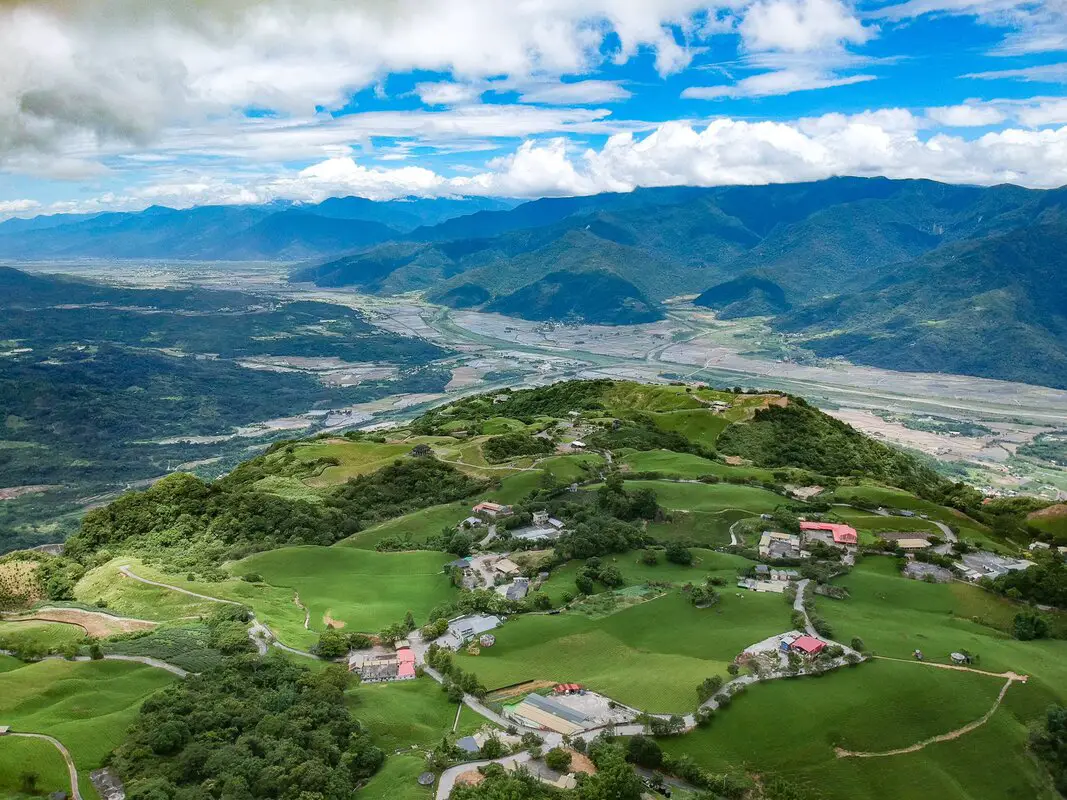
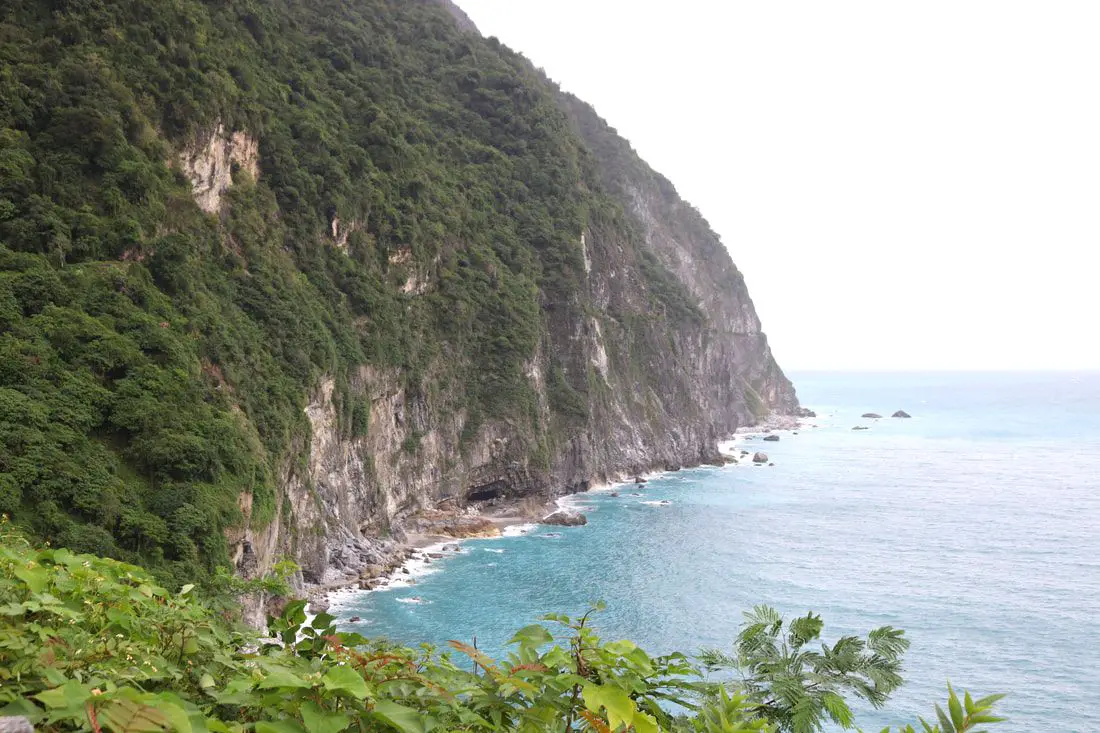
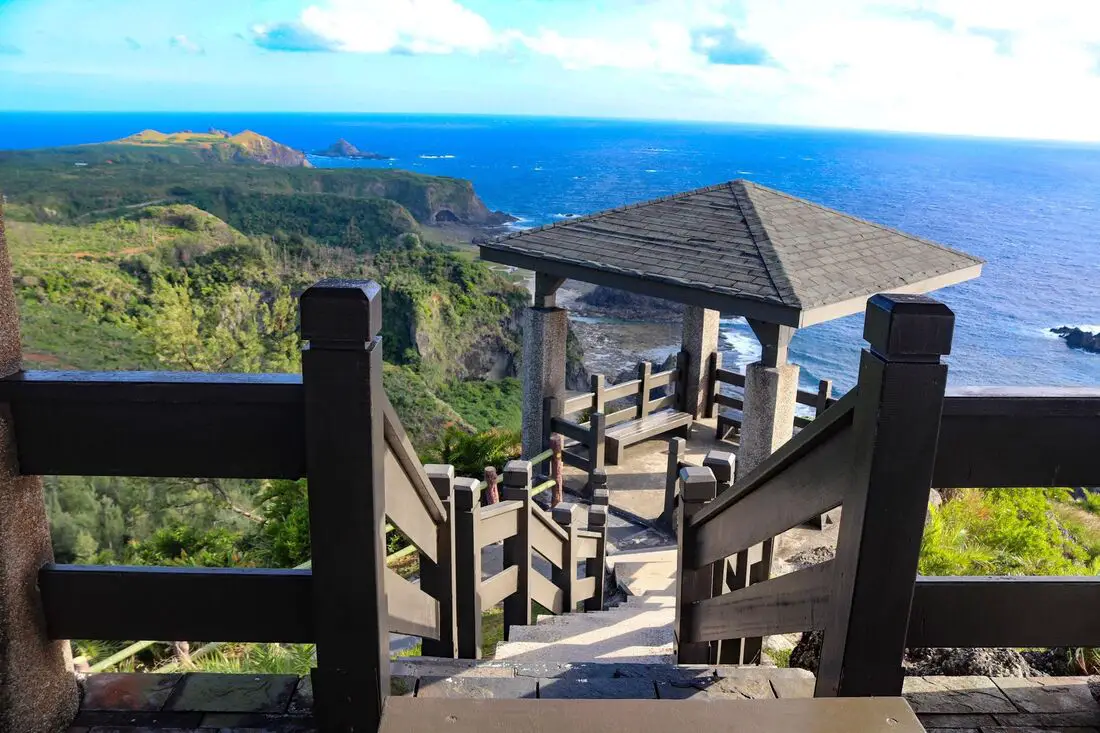

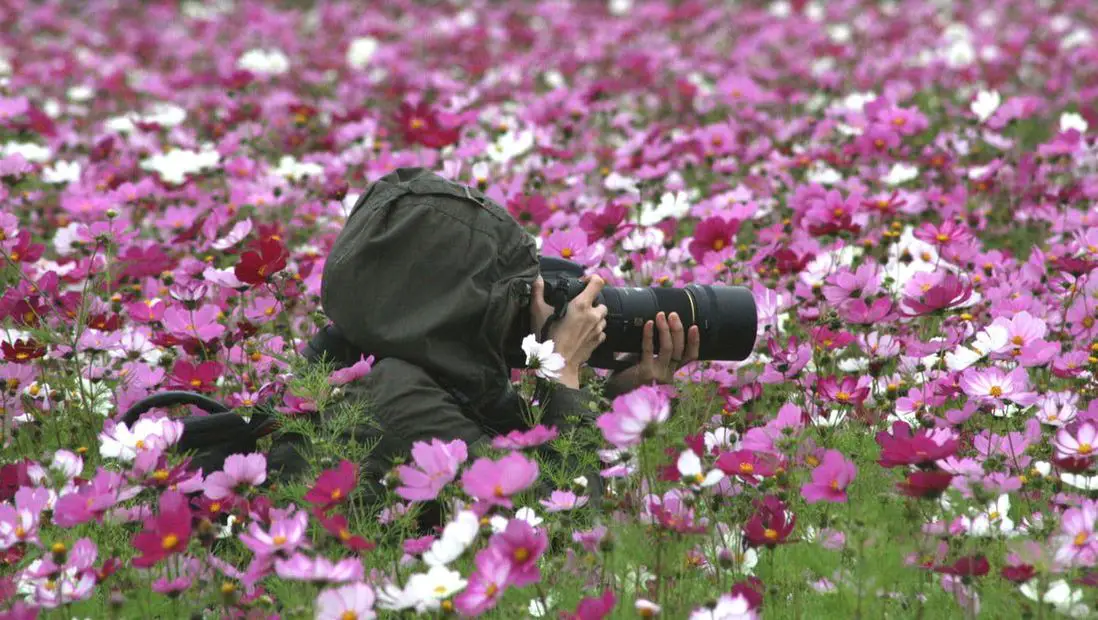

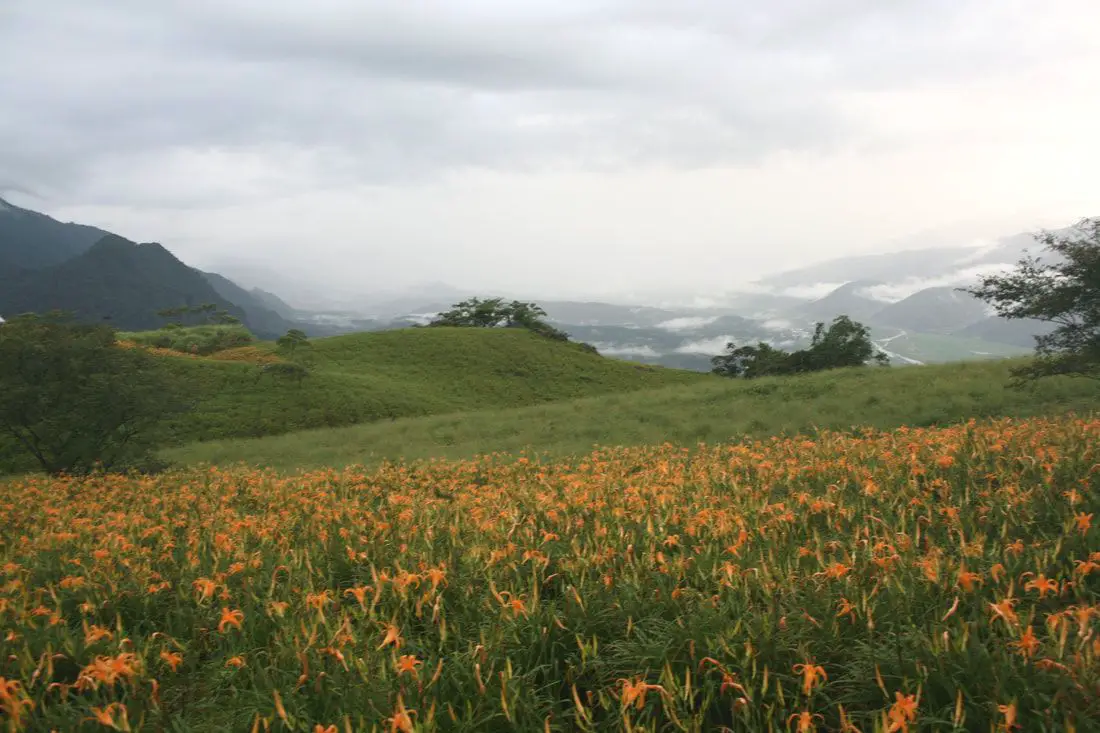

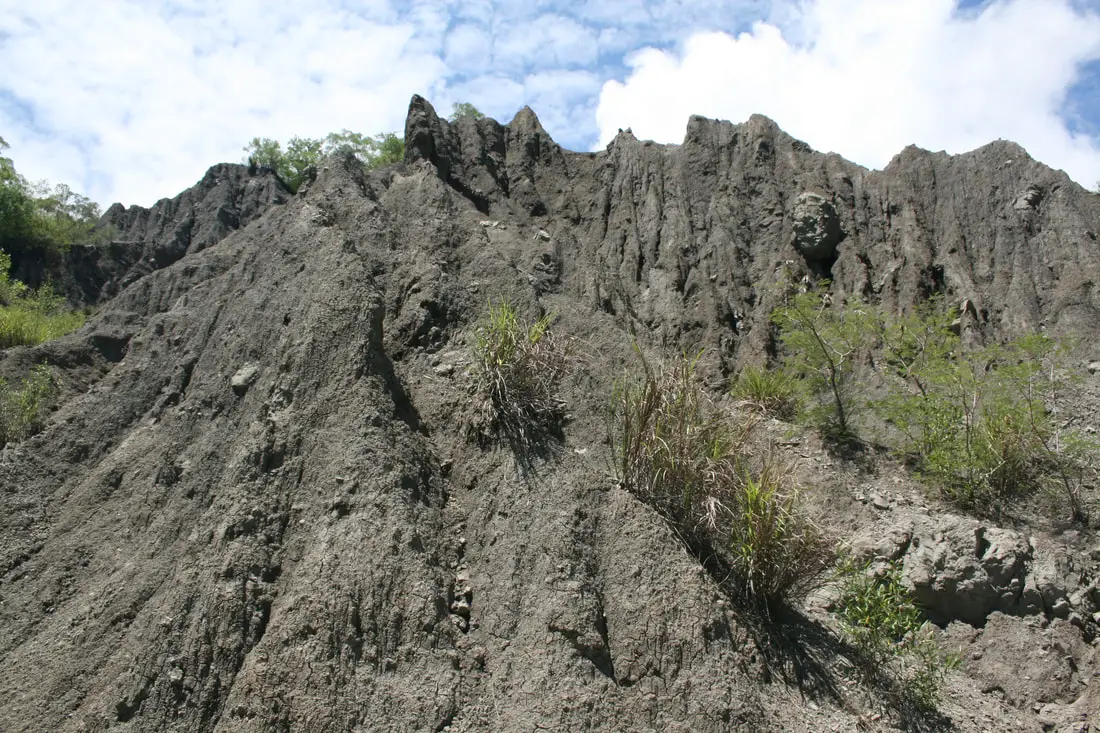
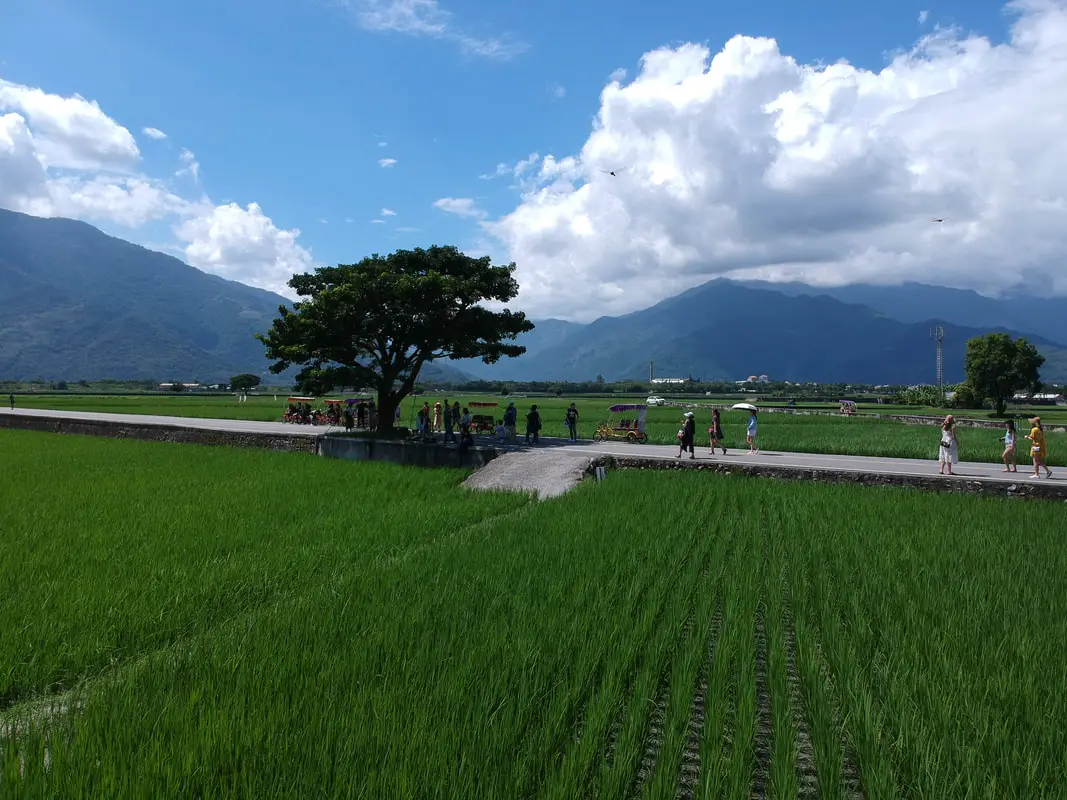
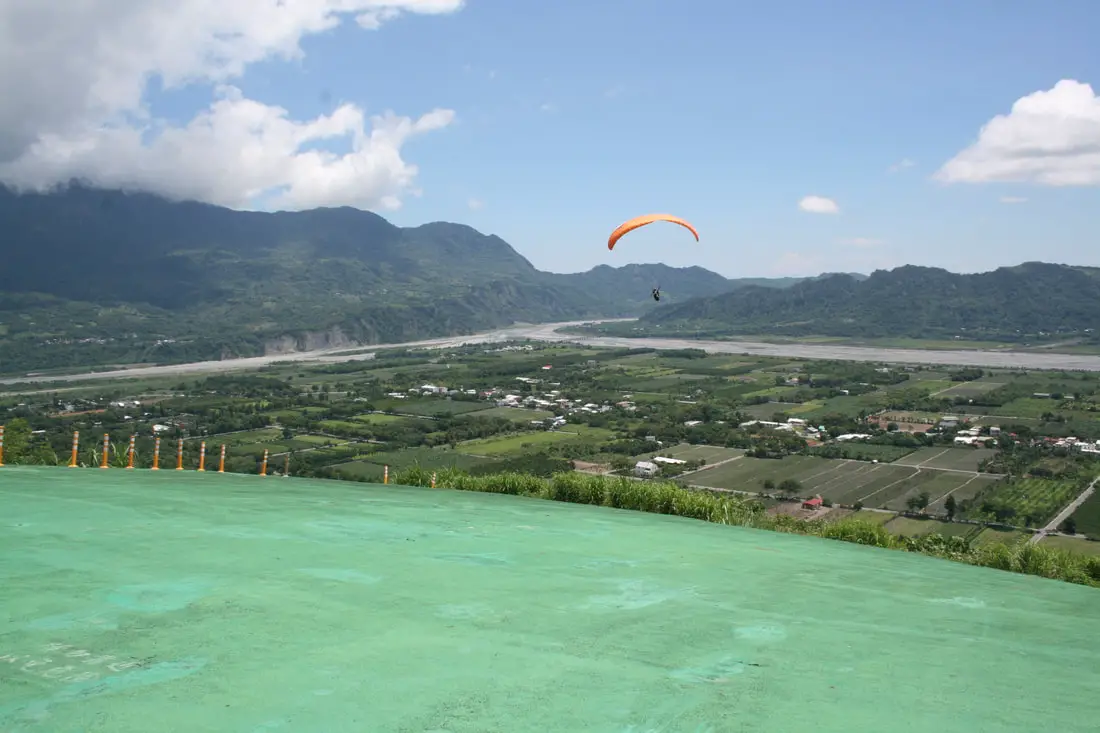
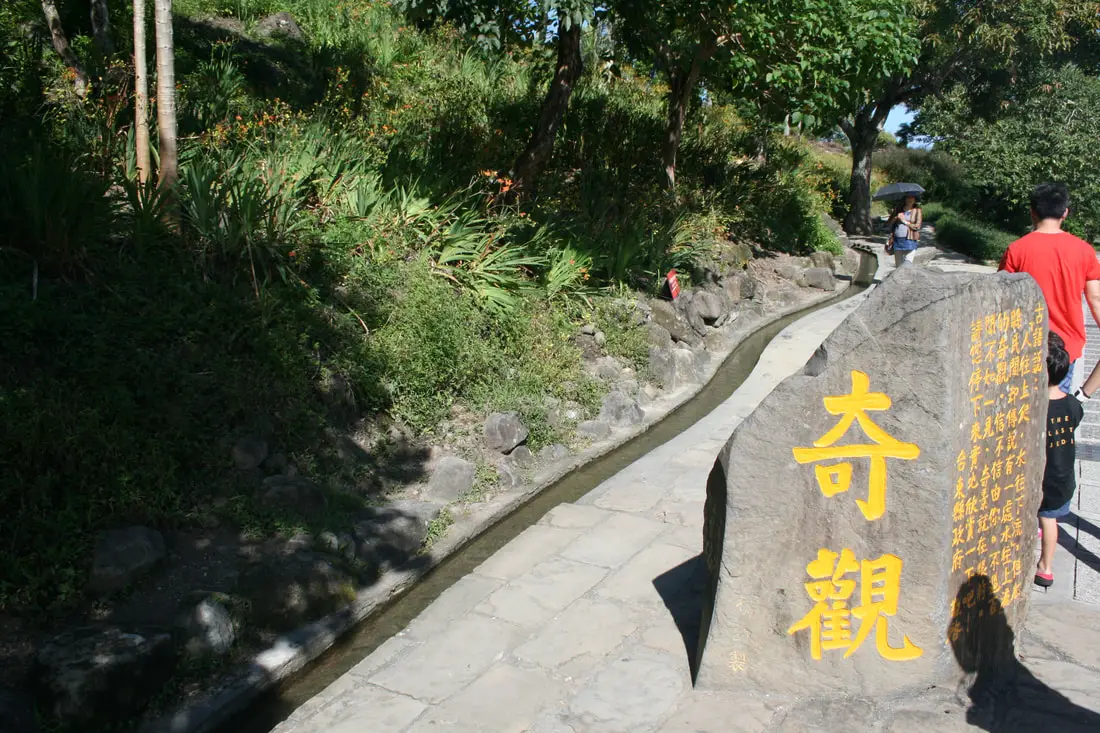
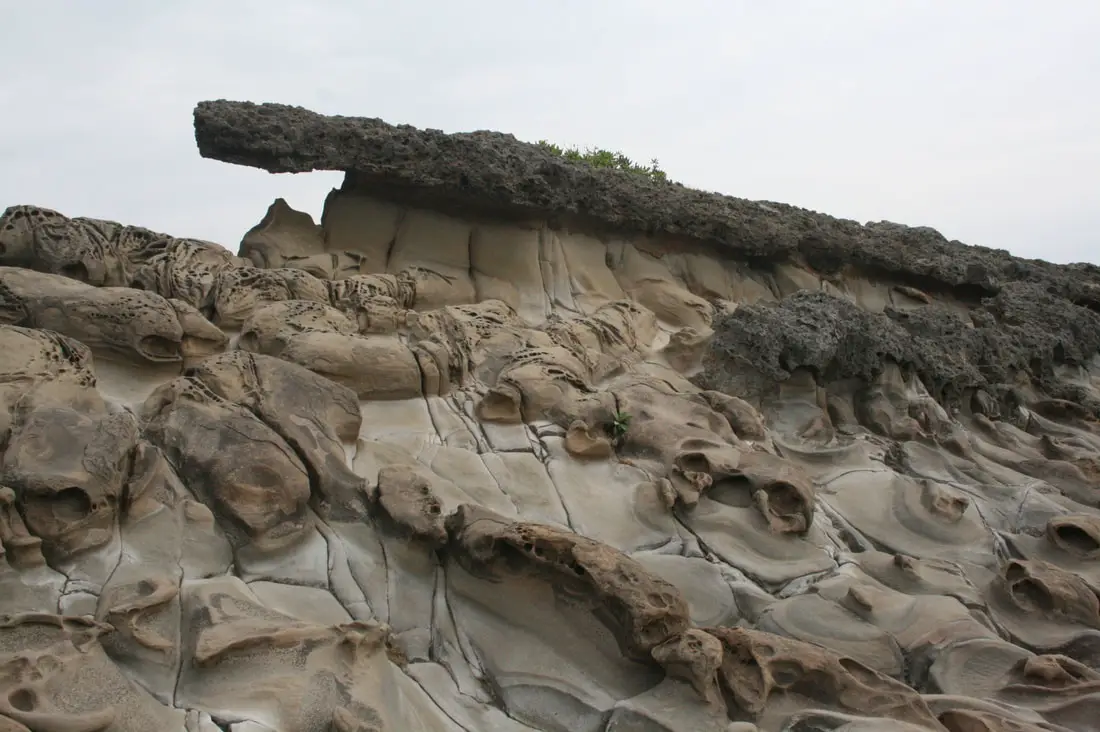
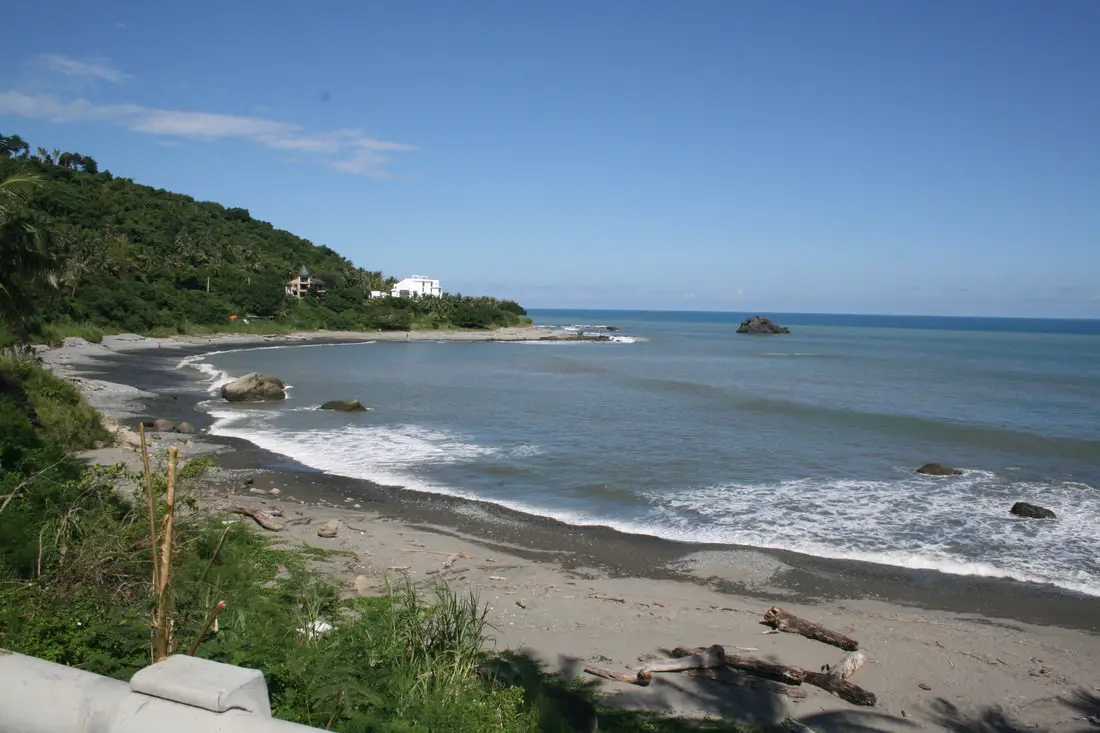
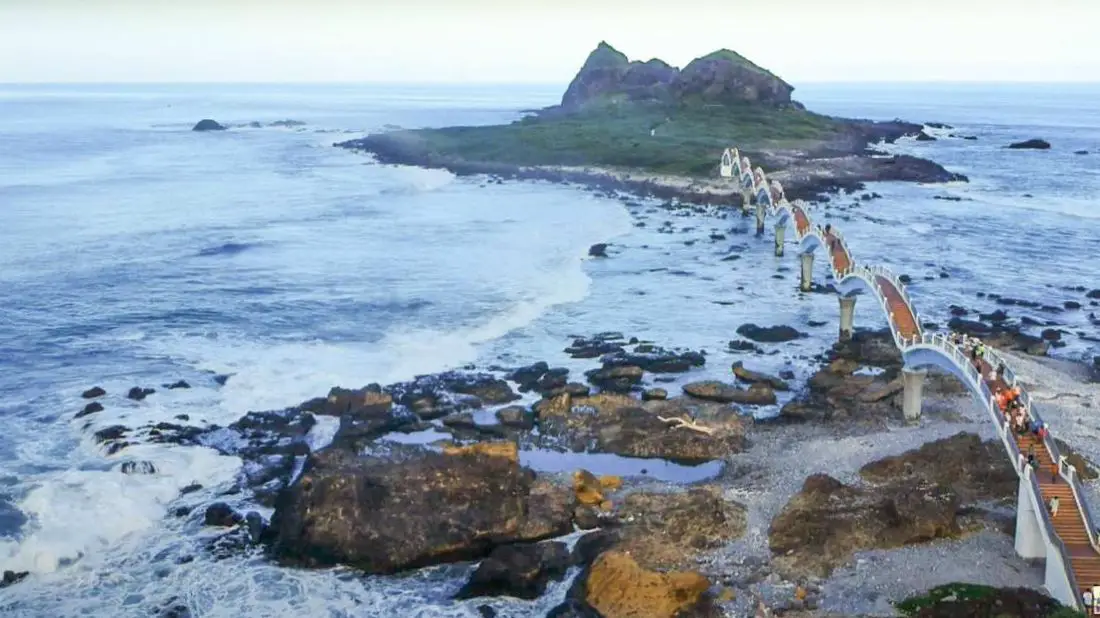
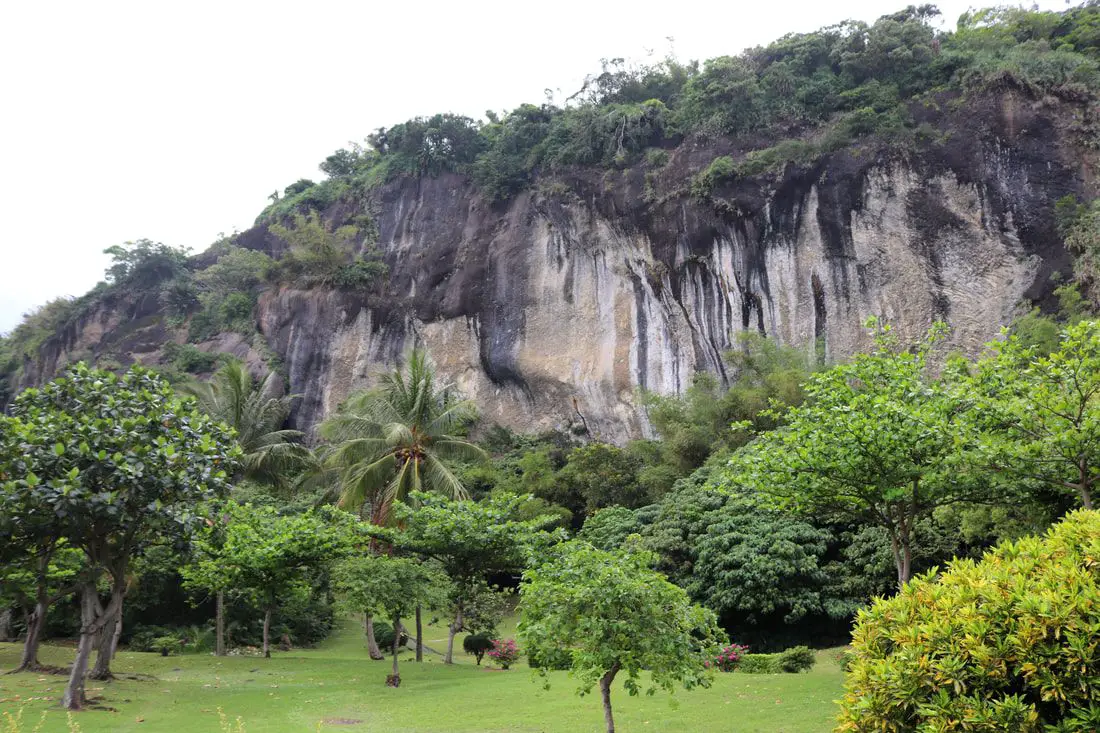
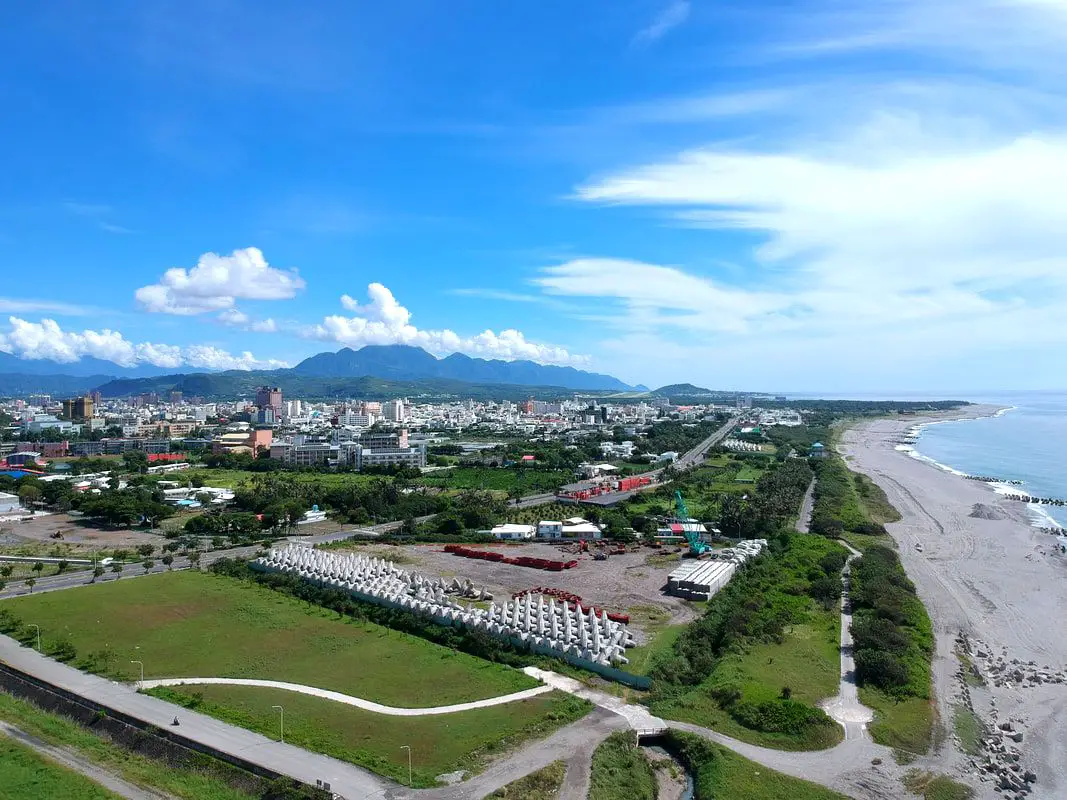
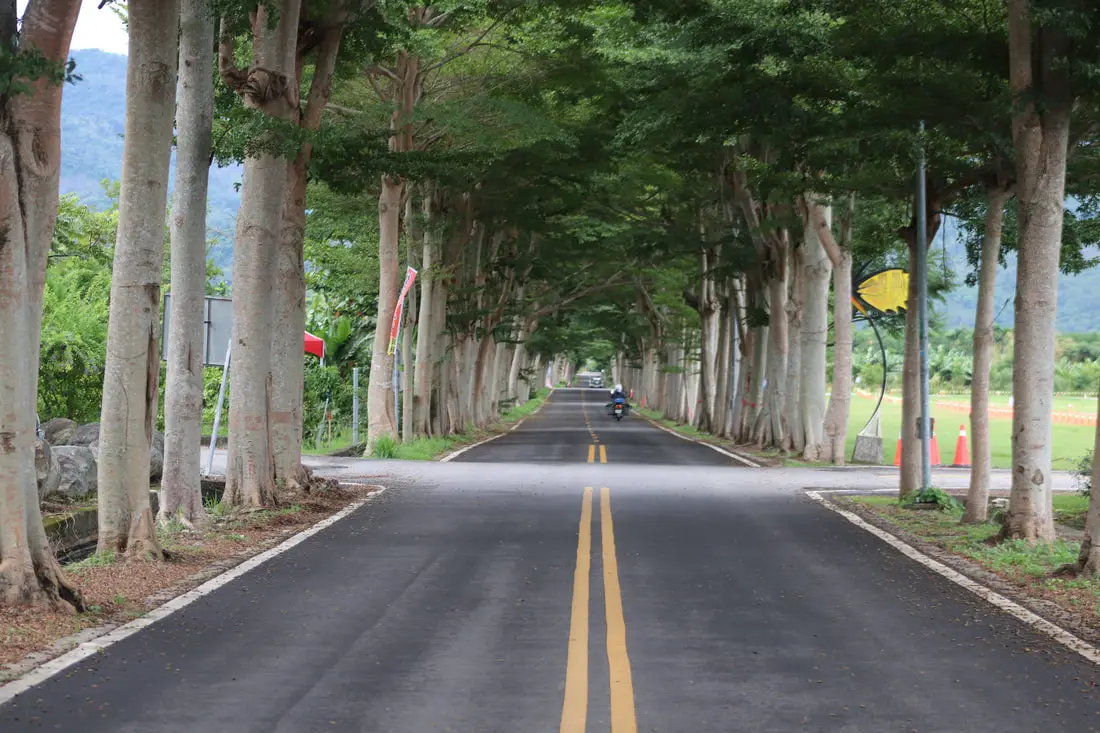
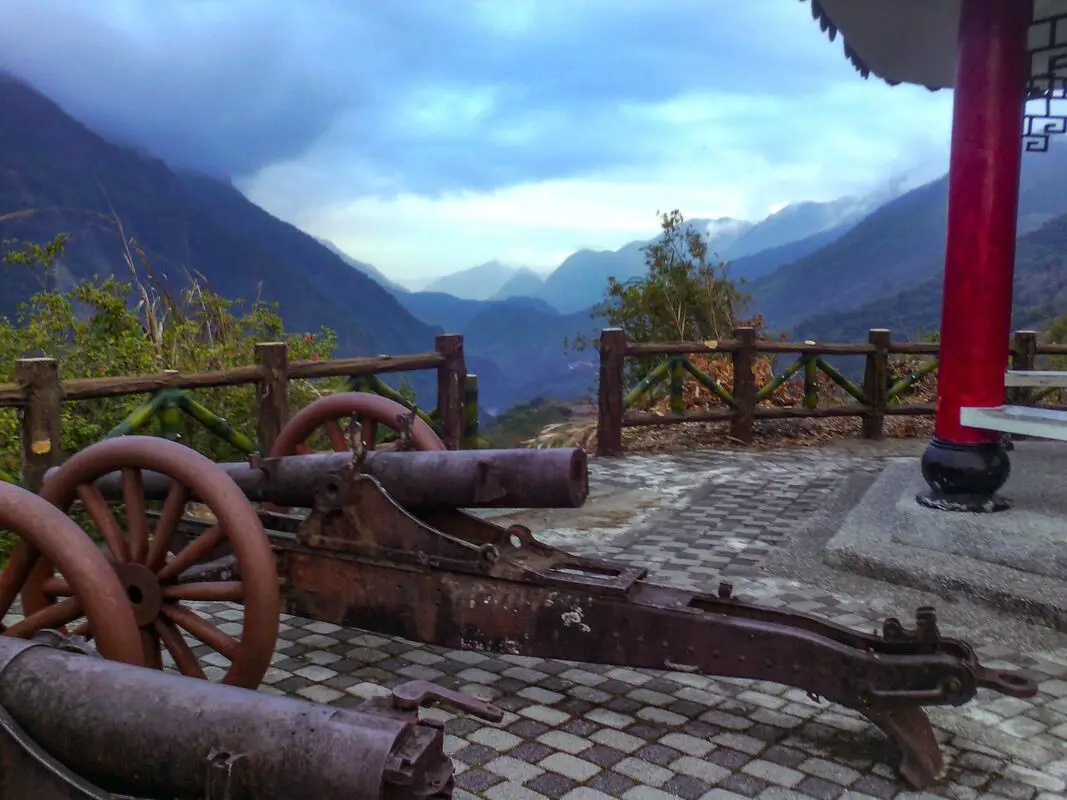
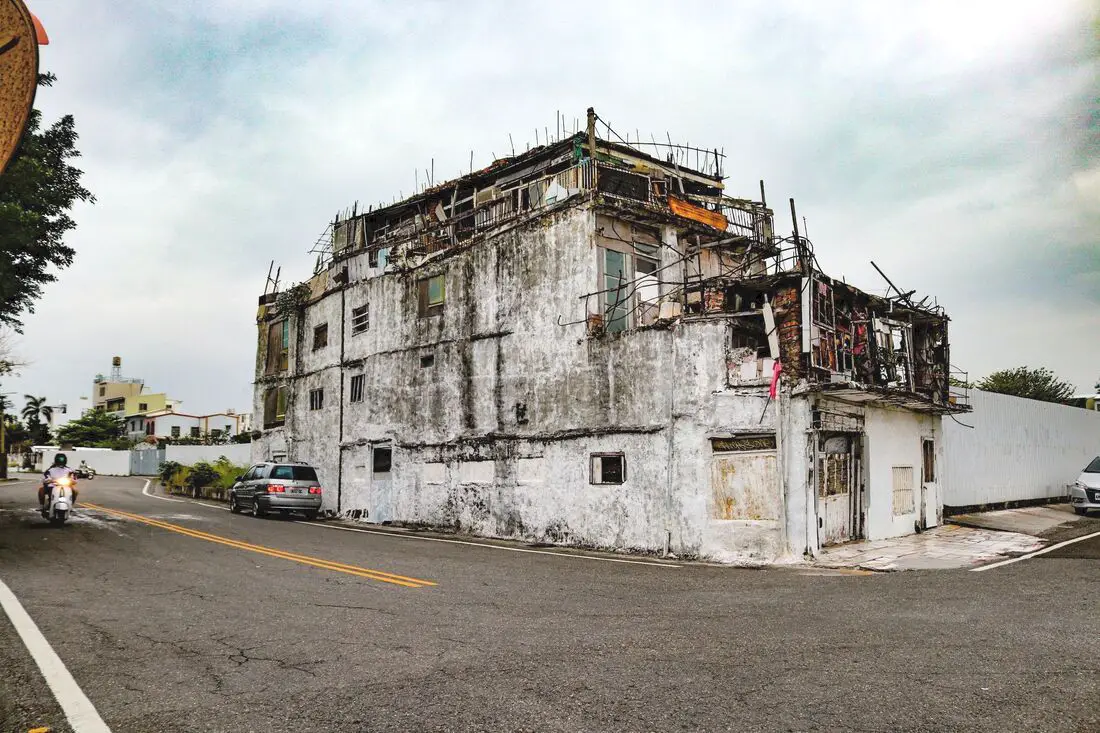
 RSS Feed
RSS Feed
